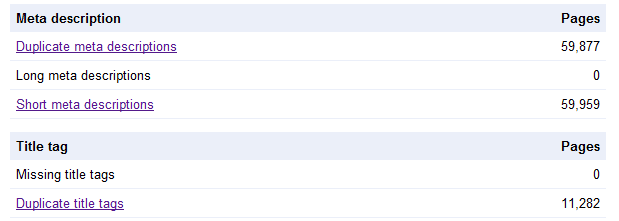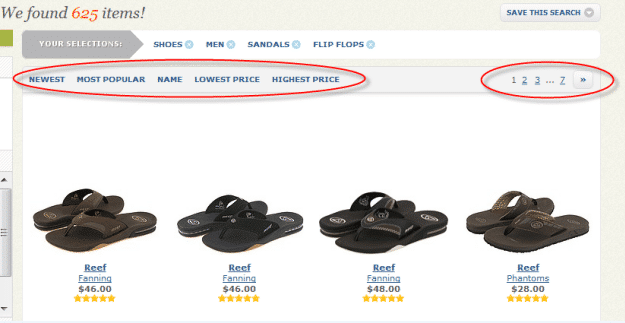SEO tips to make your content easier to find
For the past few months, we've been hearing a lot about Google's Panda update to counter the proliferation of content farms. Additionally, there have been strong penalties awarded to JC Penney and other sites for questionable practices. While link buying continues to be the buzzword, it's probably the importance of social signals in the algorithm that's probably the hot topic right now.
It is clear that new factors are at play and the popularity signals important to search engines will continue to evolve with the behavior of Internet users. However, we too often forget that SEO in 2011 remains quite similar to web SEO five years ago on several points.
Before thinking about the best popularity strategies, it is beneficial to make sure that the on-site elements of your site are in focus. It seems that many are skipping important steps in the basis of good SEO.
1 – DO CRAWLERS HAVE EASY ACCESS TO YOUR SITE'S CONTENT?
I'm not talking about the robots.txt file or the use of JavaScript, but more specific elements that are sometimes omitted.
Here are some ways to optimize the accessibility of your content.
- Make sure you have no errors in the sitemap.xml and that all URLs are present.
- Be sure not to duplicate your homepage with the use of an /index.html page. If so, add a 301 redirect from www.sitename.ca/index.html to www.sitename.ca. It is important to focus your efforts on the real landing page, as it receives the vast majority of inbound links to your domain.
- Be sure to make good use of the /fr and /en language directories.
- For news sites, make sure you have a sitemap.xml for Google News. A good presence on the Google News vertical can generate very interesting traffic.
- If you bet on videos and want to position them on search engines, make sure you have a sitemap.xml specific to videos.
- Be sure to make good use of internal links. The idea is to add user-relevant links into your page content to increase page crawling. From an SEO perspective, position these links on keyword-rich terms.
- For database-generated pages, make sure the link juice goes easily to your listings. From a strictly SEO point of view, try to reduce the use of dynamic parameters in your URLs. On this point, favor static URLs. You can also block pages generated by filters.
- Decrease the depth of directories and put in place a strategy for rewriting your URLs. If you modify URLs, it is essential to make good 301 redirects to preserve the history and the link juice of the pages.
2 – DUPLICATION OF CONTENT
Duplicate content is a common problem on many sites and a major SEO hurdle. Fortunately, it is often easy to adjust. Here are the most common issues we encounter:
Duplication de contenu causée par le CMS

In this example, the same page is placed in two places on the site. However, it should not end up in a /index.php directory. Make sure your CMS does not create duplicate pages.
Duplication caused by content architecture
This problem is more common on e-commerce sites. In our example, the product sheet "Pro model 2011" is placed in 3 directories.
- nomdusite.ca/trousers/adviso-clothing/pro-model-2011
- nomdusite.ca/adviso-clothing/pantalon/pro-model-2011
- nomdusite.ca/nouveaute/trousers/pro-model-2011
You can solve this problem with the use of "rel=canonical" or "noindex, follow", but the ideal is to counter this duplication from the start by proposing a content architecture that limits duplication.
DUPLICATION OF TITLE AND META DESCRIPTION TAGS

Lack of beacon customization is often to blame. You can solve this problem by customizing each TITLE and META description tag or by automatically generating them with your H1 tag or breadcrumb.
Page pagination and filters are also important sources of content duplication, including TITLE and META description tags.

3 – CRAWLING ERRORS.
Bots don't like server errors, that's it that's all. Whether it's a 404 page or a 500 error, make sure to reduce your crawling errors as much as possible to make it easier for robots to navigate. Google Webmaster Tools is definitely your best friend for identifying crawling errors on your site.

At this point, two things to do:
- Fix current crawling errors that were caused over time. The solution is often to redirect current 404 pages to the most similar pages on the site or homepage.
- Make sure you have a clear procedure when editing/deleting content on your site that involves changing a URL. This is probably the main cause that generates 404 pages on a site.
CASE STUDY
Lately, our SEO team has been doing similar optimization work. In just one month, we have very positive results.
- 18% increase in non-branded organic traffic
- Increased long-tail keyword coverage
- Improved positions on generic terms
TRAIN YOUR NEW (THEY)!
Important point for managers in interactive marketing.
Make sure your new, less experienced employees have a good knowledge of CMS and SEO best practices. It is often beneficial to give short trainings and guidelines for creating internal links, choosing anchor texts, using header tags, tagging and archiving pages, optimizing images and the other basic aspects of SEO.
On this, we quickly realize that there are certain points to analyze before embarking on a popularity strategy. The idea is to have a solid foundation to ensure that content is easily accessible by bots. The return of your popularity actions will be greater if your site respects good SEO practices.



.jpg)





